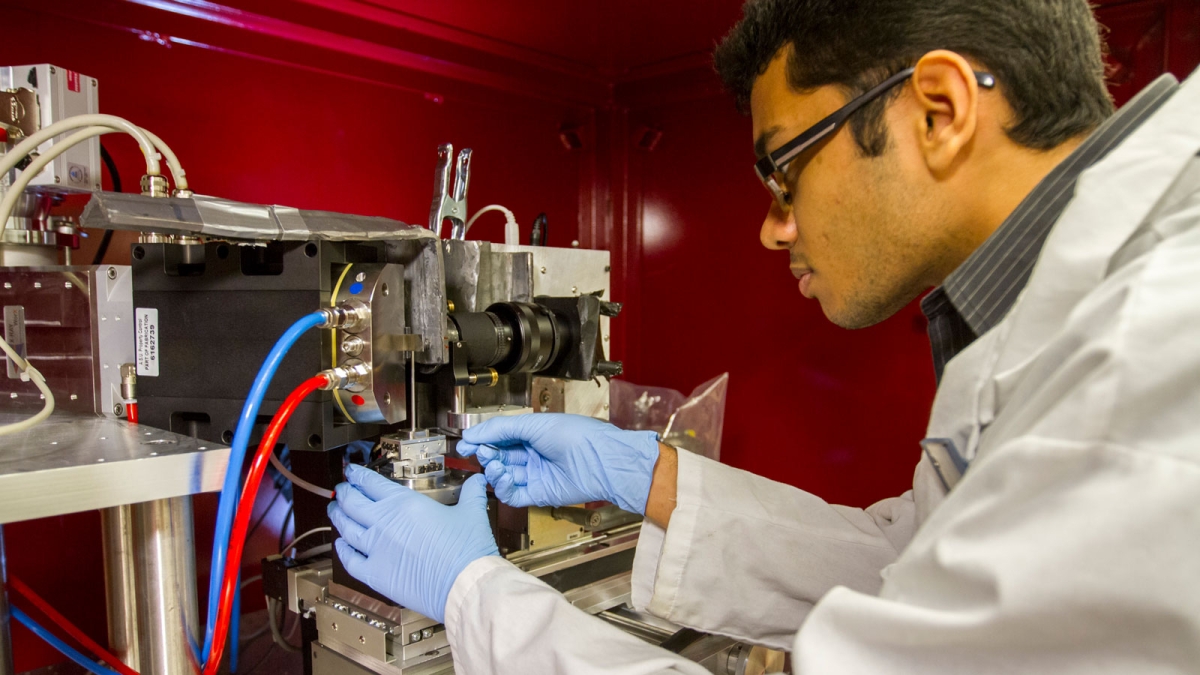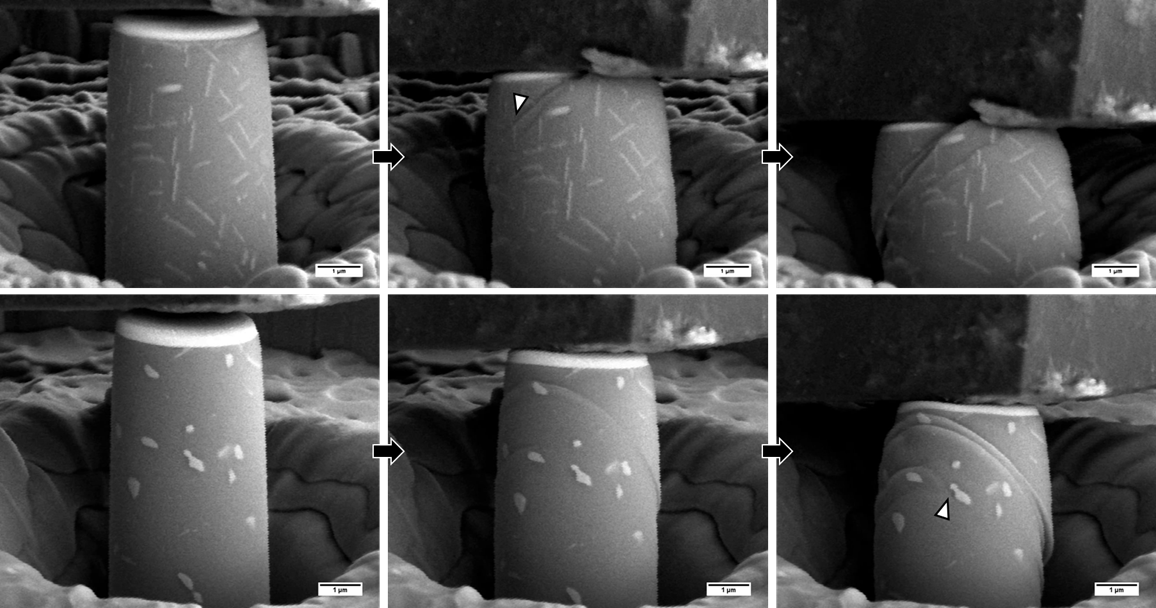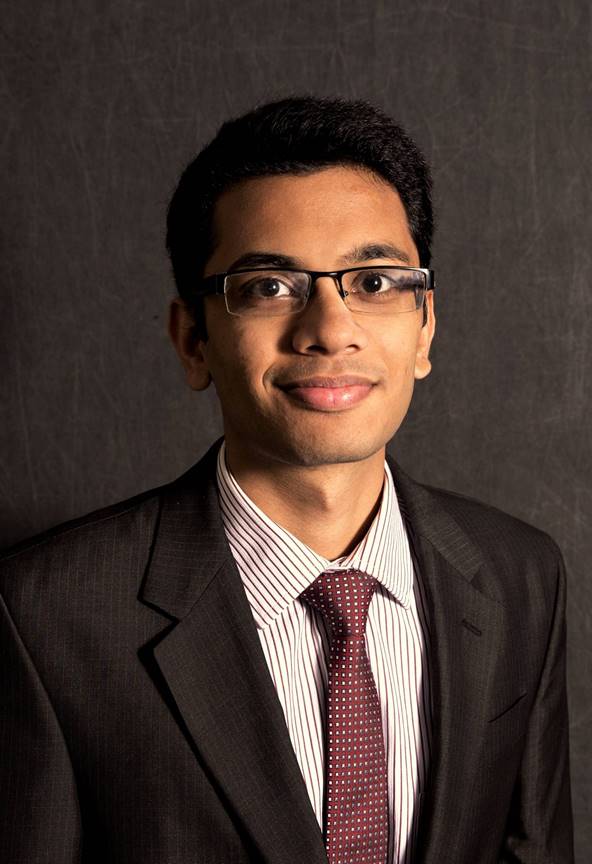New understanding of an old alloy leads to prestigious award

Recent Arizona State University materials science doctoral graduate Shashank Kaira works in Fulton Professor of Materials Science Nikhilesh Chawla’s Center for 4D Materials Science. Kaira recently earned a highly competitive Acta Student Award for his research on imaging aluminum-copper alloy behavior during deformation, published in the peer-reviewed Acta Materialia research journal. Photo by Jessica Hochreiter/ASU
Strong, lightweight aluminum-copper alloys have been used in aircraft and automotive designs for decades, but little is known about their structural mechanisms during deformation.
Recent Arizona State University materials science doctoral graduate Shashank Kaira set out to find answers. His research, published in the journal Acta Materialia, earned a competitive Acta Student Award for the impact of its results.
The Acta Student Award is given to first-author graduate students who have papers published in one of the four Acta journals. Publishing in the materials science journal Acta Materialia is highly competitive — only a handful of papers reporting on research judged to be making major contributions to the field are selected for the international student award.
“I am extremely honored to be the recipient of this prestigious award and really grateful to receive such recognition for our work published in Acta Materialia, one of the most revered peer-reviewed journals in the field of materials science,” Kaira said. “I’m hopeful I can continue to innovate and effectively contribute to the emerging field of materials science.”
He collaborated with Nikhilesh Chawla, Fulton Professor of materials science in the Ira A. Fulton Schools of Engineering at ASU, as well as other ASU materials science graduate and undergraduate students. The ASU team also worked with researchers and in facilities at the Argonne National Laboratory to explore the microstructural evolution and deformation behavior of aluminum-copper alloys.
Kaira and the research team took a different approach from traditional characterization methods, which can be destructive to the alloys and restrict the insights the characterizations are able to provide. The team instead used using 3D X-ray imaging to view deformation over time to better understand what happens.
“By using this state-of-the-art technique, we were able to see things that were happening with respect to how the structure deforms in a way that provides all kinds of new insights and new mechanisms that we haven’t been able to see before,” Chawla said. “Shashank was able to answer questions that have been unanswered for the last 50 years or so.”
Shashank Kaira
The advanced characterization techniques Kaira and the research team used allowed them to better understand the nanoscale processes occurring in aluminum-copper alloys. They looked at the complex 3D dispersions of brittle intermetallic precipitate particles that strengthen the alloy — think of the crunchy chocolate flakes in soft mint ice cream. When immense pressure is put on the alloy, these particles deform and change the properties, strength and behavior of the metal.
“Understanding such phenomena in metallic systems can be key to nano-engineering their microstructure and aid in designing next-generation structural materials with enhanced mechanical properties,” Kaira said.
This research was conducted at both the ASU Tempe campus in Chawla’s Center for 4D Material Science and at the Argonne National Laboratory Advanced Photon Source in Chicago.
Researchers in Chawla’s Center for 4D Material Science use X-ray tomography and other techniques to study the microstructures of materials as a function of time — the fourth dimension — and its effect on 2D (flat) and 3D (cubicle and spherical) objects.
To work at the Advanced Photon Source in Argonne National Laboratory, Kaira needed a solid proposal for how he was going to use the facilities, and a precise plan for his experiments during the few days every six to nine months he had access to the lab's equipment.
“There are a lot of hoops to jump through and there is a lot of preparation that has to be done prior to going on the trip. Then it’s a lot of pressure because you have three days to get everything done,” Chawla said. “Shashank was really good at doing all of that and navigating through all of the challenges just to do the experiments, then coming back with terabytes of data and analyzing it.”

An example of in situ imaging of the deformation of a small piece of aluminum-copper alloy over time. Shashank Kaira used imaging facilities at the Argonne National Laboratory Advanced Photon Source in Chicago to gain new understanding of what happens to aluminum-copper alloys when pressure is applied.
Kaira says he is thankful for the help he received from Chawla, his ASU research team members and his Argonne National Laboratory collaborators, as well as the research results the collaboration made possible.
With the aid of the facilities and tools available at the Argonne National Lab, Kaira was able to make observations that answer fundamental questions about the role of precipitative particle deformation and gain new knowledge that can be used to develop better and more sophisticated aluminum alloys for the aircraft and automotive industries. The Acta journal editors recognized these important contributions with the Acta Student Award.
“Shashank was one of my best students in the last 20 years here at ASU,” Chawla said. “I know he worked really hard for this. I’m not surprised, but it’s pretty amazing that he got this award.”
Kaira is now a failure analysis research and development engineer for Intel. His doctoral research into understanding microscale phenomena in different materials using advanced characterization techniques has been useful in his current work.
“A significant part of my doctoral research involved fundamentally understanding a multitude of microscale phenomena in different materials using advanced characterization techniques,” Kaira said. “A thorough understanding of such complex material and device interactions can play a crucial role in enabling the development of robust next-generation semiconductor devices and microelectronic packaging technologies.”
Kaira's Acta Student award is the second granted to an ASU engineering student in recent years. In 2016, ASU biomedical engineering doctoral student Ali Navaei won the Acta Student Award for his research results published in Acta Biomaterialia.
More Science and technology
2 ASU faculty elected as fellows to National Academy of Inventors
Arizona State University faculty members Bertram Jacobs and Klaus Lackner have been elected as fellows to the National…

Harvesting satellite insights for Maui County farmers
Food sovereignty can refer to having access to culturally significant foods, but Noa Kekuewa Lincoln believes it goes farther…

Google grant creates AI research paths for underserved students
Top tech companies like Google say they are eager to encourage women and members of historically underrepresented groups to…
